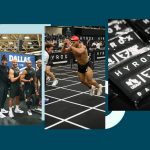As a job seeker you need to be ready with both a resume and a cover letter.
Most job applications require a resume right away, and the best resumes are matched to the jobs you are targeting. Some jobs posted on LinkedIn allow you to “Easy Apply” with just your LinkedIn profile (so you should optimize your LinkedIn profile too) but even with these jobs you often have the opportunity to attach a resume in addition to your LinkedIn profile. If your resume has more details (or different details) than your LinkedIn profile, you’ll want your application to include both.
Not every job posting requests or even allows a cover letter, but sometimes it’s required to move forward. Even when it’s optional, submitting a cover letter puts an additional piece of marketing yourself in front of prospective employers, so take that opportunity (and do what you can to maximize the chance that employers will read your cover letter). The cover letter is not redundant to your resume. Here are the key differences:
1 – Structure of a resume vs cover letter
The most obvious difference is that the cover letter looks different than the resume. The cover letter is a business letter, or even if it’s the shorter, more casual email version, it’s still structured like a letter. On the other hand, the resume is structured like an outline of your career trajectory. Sections include your contact information, a summary of highlights, experience, education and additional information, such as technical skills, volunteer work and interests.
2 – Voice of a resume vs cover letter
Since the cover letter and resume are structured differently, your voice (i.e., how you express yourself) comes across differently with each tool. The resume is written in bullet points, which is sufficient for getting the information across, but not so much your personality. Don’t be cute with your resume in an effort to show your personality – it just looks unprofessional. I once received a resume printed on a page with a banana (yes, the fruit) in the background. The resume header said, “I’m ripening”. Perhaps, the resume writer wanted to different enough to be remembered. I do remember that resume, but not for the right reasons!
Your personality has more of a chance to shine through in your cover letter. The cover letter is written in prose, so even though it also shares information like the resume, the details unfold in complete sentences – ideally like a story, if you write a compelling cover letter. You are not bound to specific sections like the resume, with experience in one place, education in another, etc. Unlike the resume, you are also not restricted to reverse chronological order. You can decide to group information differently and to jump around in time, depending on what details you want to highlight. The choices you make reflect your voice and message.
3 – How employers use the resume vs cover letter
Given the different ways a cover letter and resume dispense information, employers use these tools differently. Recruiters skim resumes in second, looking at your career chronology – is there a clear progression of increasing responsibility? Are there long employment gaps or short job tenures that need further explanation? Do the skills and experience listed on the resume match what the job requires?
The cover letter showcases your communication skills and style. If the job opening requires writing ability, the cover letter is the first proof point employers see. The cover letter also can highlight things that aren’t obvious from the resume or anticipate and explain potential objections to your candidacy. For example, if you have employment gaps or short job tenures that an employer will see from your resume, you can explain what you accomplished during your unemployed time, or that your short job tenures were because you followed your mentor from job-to-job. If your relevant skills and experience is from school or other non-work activity, your cover letter can highlight these in a way that may get overlooked in the resume.
4 – How you should use your resume vs cover letter
Since the cover letter and resume have such different structures, voice and impact on the employer, you need to differentiate how you are using these tools. Do you thoughtfully choose what to include in your cover letter and not just summarize what’s already in your resume? Does your cover letter highlight the skills and experience that match your dream job? Does your cover letter explain away any red flags from your resume?
Your resume can serve as an audit of your career. Does your experience section show progress over time? Are the results and responsibilities you elaborate on in each job tangible and translatable to the jobs you are targeting? Does your education reflect continuous learning (or are you at least learning new skills on the job)? Is your Summary right at the top of the resume a reflection of your range of experience and expertise, as well as directly relevant to the level and scope of job you want?
A strong resume and cover letter are just one part of your job search kit
You need both a resume and a cover letter. You also need a strong LinkedIn profile, not just for Easy Apply jobs, but also because, when you network during your job search, people will look you up online. Then, since you’ll be networking, you need a strong networking pitch to introduce yourself. If these marketing tools get you in the door, you’ll need strong interviewing skills (e.g., starting strong, not rambling, answering difficult questions) to land the job.
Read the full article here










